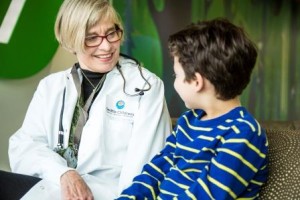
Results from two phase 3 clinical trials published yesterday in the New England Journal of Medicine show that a new combination of medications can successfully treat the underlying cause of cystic fibrosis for patients age 12 and older with two copies of the F508del gene mutation – the most common form of the life-threatening, genetic disease found in over half of the cystic fibrosis (CF) population. Approximately 8,500 people in the U.S., and 22,000 people in North America, Europe and Australia, age 12 and older with cystic fibrosis carry this gene mutation.
The international trial, which studied more than 1,000 cystic fibrosis patients age 12 and older, revealed that a combination of the drugs Kalydeco (ivacaftor) and lumacaftor, an experimental drug that has not yet been approved by the Food and Drug Administration (FDA), successfully treated the defective CF protein and improved lung function. The drugs also helped patients achieve a 40 percent reduction in pulmonary exacerbations, the leading cause of death in cystic fibrosis patients.
“What gives me tremendous confidence and excites me the most are the comprehensive health improvements seen in patients across all age groups, in all geographies and with all levels of disease severity,” said Dr. Bonnie Ramsey, director of the Center for Clinical and Translational Research at Seattle Children’s Research Institute and professor at the University of Washington, who was one of four lead authors on the trial. “Patients can now have longer periods of good health, greatly improving their quality of life.”
Favorable results
Sharla Ellens’ 17-year-old daughter Paige was a participant in the clinical trial. Her mother said she saw immediate improvement to her lung function on the medication.
“She had far fewer hospitalizations than normal,” said Ellens. “Even when she did have a pulmonary exacerbation, she bounced back much more quickly.”
“I cannot highlight enough the importance of these medical and research strides,” Ellens added. “This medication will allow Paige to lead a more normal life and continue to do the things she loves, like playing varsity soccer and participating in the school musical.”
Genetics behind the disease
The drugs work together to address the defective gene mutation by allowing the proteins within the cell to fold properly, reach the cell surface and then work as a salt channel. They were given to patients over the course of 24 weeks in an effort to gain insight on how they may improve lung function and quality of life for people living with cystic fibrosis.
“Being able to treat not just the symptoms, but the underlying cause of cystic fibrosis by targeting this specific gene mutation, is a major game changer because it is by far the most common in patients with this disease,” said Ramsey. “Previously, we found that Kalydeco treated just four percent of cystic fibrosis patients, but this new combination treats the defective CF protein for a much greater number of patients.”
The trial included cystic fibrosis patients from Seattle Children’s and the University of Washington Medical Center. Today, the median predicted age of death for a person with the disease is in the mid-20s.
Hope for families
Danica Pytte is cautiously hopeful about the drug’s benefits. Her vibrant, 13-year-old daughter, Sydney, is a cystic fibrosis patient of Ramsey’s. She was not a part of the clinical trial, but would be a candidate for the medication if approved. Sydney struggles to maintain her weight and requires a very high daily caloric intake, a common symptom many CF patients experience.
“Sydney is very active; a competitive gymnast, a member of her school’s volleyball and basketball teams,” said Pytte. “I don’t want her to have to worry about every meal for the rest of her life. I want her to be able to focus on the things she loves doing.”
“If Sydney gets access to this medication, it will give us a new level of hope. It could open up so many doors for her. It’s hard to think your child might not live as long as you. This new research gives us a sense of relief and hope that she can lead a normal life.”
The road to approval
Dr. Ramsey presented the study’s findings at the Center for Drug Evaluation and Research advisory committee meeting on May 12; the FDA advisory committee voted 12 to one to recommend that the FDA approve the ivacaftor/lumacaftor combination therapy. The FDA is expected to make its final decision by July 5, 2015.
If approved, Ramsey and her colleagues will be able to prescribe ivacaftor/ lumacaftor to patients age 12 and older with F508del/F508del mutation. There are ongoing safety studies of the drug combination in children 11 years old and younger. These studies are being conducted at sites in the CF Therapeutics Development Network, which is coordinated at Seattle Children’s.
Vertex developed ivacaftor and lumacaftor in collaboration with the Cystic Fibrosis Foundation which provided clinical and financial support.
A career of research
Ramsey has been a pioneer in cystic fibrosis treatment and dedicated her career to bringing new treatments and therapies to patients with cystic fibrosis that will help improve their quality of life.
“Nothing has been more rewarding than watching the progress of our research over all these years,” Ramsey said. “It has been unbelievable that we began this work 15 years ago with merely a concept of finding a way to treat the underlying cause of this disease, and now, it’s changing patient’s lives. I’m honored to have been able to observe this.”
For more information on cystic fibrosis research trials at Seattle Children’s, please call 206- 987-3921.

